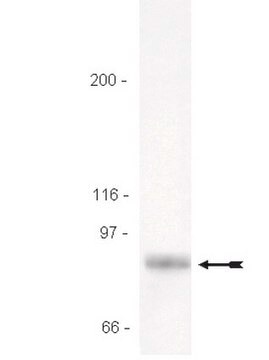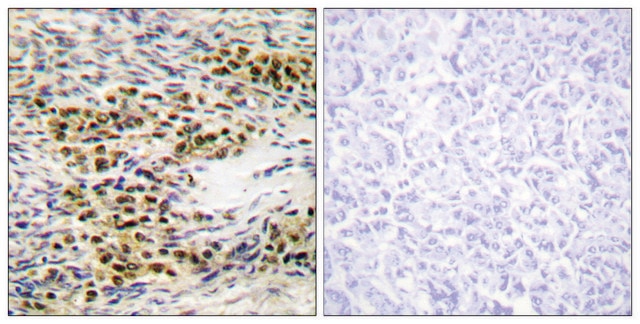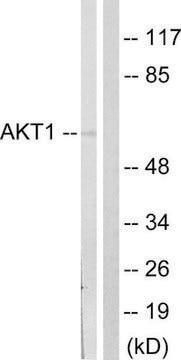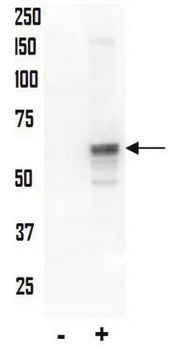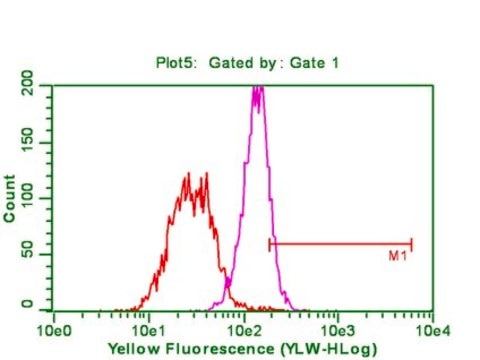07-888
Anti-phospho-PRAS40 (Thr246) (Proline-Rich AKT substrate) Antibody
Upstate®, from rabbit
Synonym(s):
40 kDa proline-rich AKT substrate, AKT1 substrate 1 (proline-rich), proline-rich Akt substrate, 40 kDa
About This Item
Recommended Products
biological source
rabbit
Quality Level
antibody form
affinity purified immunoglobulin
antibody product type
primary antibodies
clone
polyclonal
species reactivity
mouse, human
manufacturer/tradename
Upstate®
technique(s)
western blot: suitable
isotype
IgG
NCBI accession no.
UniProt accession no.
shipped in
dry ice
target post-translational modification
phosphorylation (pThr246)
Gene Information
human ... AKT1S1(84335)
mouse ... Akt1S1(67605)
General description
Specificity
Immunogen
Application
Quality
Western Blot Analysis:
A 1:1000 dilution of this lot detected phosphorylated PRAS40 (Thr246) in RIPA lysates of unstimulated and PDGF stimulated NIH3T3 cells.
Target description
Physical form
Analysis Note
PDGF stimulated NIH3T3 cells.
Other Notes
Legal Information
Not finding the right product?
Try our Product Selector Tool.
wgk_germany
WGK 2
Certificates of Analysis (COA)
Search for Certificates of Analysis (COA) by entering the products Lot/Batch Number. Lot and Batch Numbers can be found on a product’s label following the words ‘Lot’ or ‘Batch’.
Already Own This Product?
Find documentation for the products that you have recently purchased in the Document Library.
Our team of scientists has experience in all areas of research including Life Science, Material Science, Chemical Synthesis, Chromatography, Analytical and many others.
Contact Technical Service